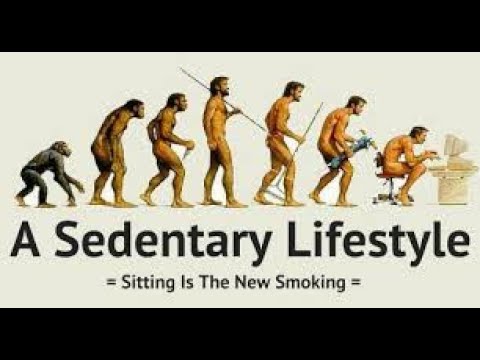In an era dominated by desk jobs and digital leisure, the detrimental effects of a sedentary lifestyle are well-documented. From increased risks of cardiovascular disease to metabolic dysfunction, prolonged sitting has become a modern health adversary. Many seek simple solutions, often looking to environmental adjustments for relief. However, recent scientific findings present a rather sobering reality: merely changing the temperature around you won`t save your blood vessels from the silent harm of a static existence.
The Persistent Threat of Prolonged Sitting
Our bodies are designed for movement. Yet, a significant portion of the global workforce spends eight or more hours a day seated, often followed by leisure time in similarly static postures. This extended inactivity isn`t just about weight gain; it profoundly impacts our internal systems, particularly the delicate network of blood vessels that nourish every cell.
One critical function of these vessels is vasodilation—their ability to widen and increase blood flow. This process is essential for delivering oxygen and nutrients efficiently and is a key indicator of vascular health. Conversely, vasoconstriction is the narrowing of vessels, which can restrict flow. Prolonged sitting has been consistently linked to impaired vasodilation, especially in the skin`s microvasculature, leading to concerns about compromised circulation and its long-term health consequences.
The Temperature Hypothesis: A Busted Myth?
It`s an intuitive thought: if sitting restricts blood flow, perhaps stimulating the body with temperature changes—like a brisk cold followed by warmth—could “trick” the vessels into better performance? This idea, appealing in its simplicity, has now faced direct scientific scrutiny.
Researchers in Japan embarked on a study, published in the esteemed European Journal of Applied Physiology, to investigate this very concept. They involved a group of healthy young volunteers, comprising both men and women. The methodology was straightforward yet insightful: on one occasion, participants remained seated for two hours in a room held at a constant, comfortable 25°C. On another day, they endured the same two-hour sitting period, but this time the ambient temperature fluctuated dramatically, cycling twice between a cooler 18°C and a warmer 35°C, mimicking real-world environmental shifts.
The Unsettling Results: A Clear Disconnect
After each session, the scientists meticulously assessed the participants` forearm blood vessels, specifically measuring their capacity for vasodilation and their response to vasoconstrictive stimuli. The findings were unambiguous and, for those hoping for an easy fix, disappointing:
- Impaired Vasodilation Persisted: Regardless of whether the room temperature remained constant or cycled wildly, prolonged sitting significantly diminished the blood vessels` ability to expand.
- Increased Constriction Response: The vessels also exhibited an amplified tendency to constrict, again, unaffected by the changing thermal environment.
In essence, the study concluded that simply alternating between heat and cold did not prevent the observed circulatory impairment caused by extended immobility. It appears the physiological damage wrought by sitting is more fundamental than what superficial temperature fluctuations can counteract.
“The simple act of alternating between heat and cold does not prevent the circulatory disturbances. This strongly indicates that more direct and active interventions, such as regular breaks and dynamic movements throughout the day, are truly indispensable.”
Beyond the Thermostat: What Actually Works
This research serves as a stark reminder: when it comes to mitigating the risks of a sedentary lifestyle, there are no shortcuts or passive remedies. The human body demands active engagement. The implications are clear: relying on environmental temperature changes to offset the harm of prolonged sitting is a misguided effort, a technological “solution” to a biological problem that requires a biological response.
Instead, the scientific consensus points back to what health professionals have long advocated:
- Regular Movement Breaks: Stand up, stretch, walk around for a few minutes every hour. Even short bursts of activity can significantly improve blood flow and muscular engagement.
- Active Lifestyle Integration: Incorporate more physical activity into your daily routine—take the stairs, walk during lunch breaks, or use a standing desk for part of the day.
- Targeted Exercises: Consider simple calf raises or ankle pumps while seated, which can help stimulate blood flow in the lower limbs.
Key Takeaway:
The latest research unequivocally demonstrates that while temperature regulation is crucial for overall bodily function, it offers no shield against the specific vascular damage inflicted by prolonged sitting. The only proven antidote remains active movement.
A Call to Action for Our Vessels
In a world increasingly designed for convenience and stillness, it is imperative to consciously carve out opportunities for movement. The notion that a quick blast of cold air or a warm room can undo hours of immobility is, charmingly perhaps, naive. Our vascular system is a complex marvel, and its health hinges on the dynamic interplay of muscle contraction and blood flow, not just ambient thermal comfort.
So, the next time you find yourself settling in for another long stretch of sitting, remember this: your blood vessels aren`t impressed by your thermostat. They`re waiting for you to get up and move. It`s not just about feeling better; it`s about preserving the fundamental health of your circulatory system.









